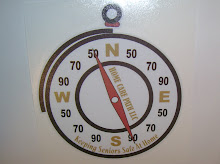Long ago it was believed life could take form from nonliving matter. People thought decaying meat produced maggots, plant (beer) and animal (milk) fluids produced microorganisims that could contribute to illness.
In the 1600's Francesco Redi demonstrated that the maggots were hatched from the larvae of flies that had access to the meat. Place the meat in a container to separate it from the flies and you will not have maggots.
Louis Pasteur discovered microorganisms (yeasts) acted on the sugars (beer) to convert them to alcohol. This is fermentation and used to make beer, and wine. Spoilage of beer and wine occurred later when bacteria (microorganisms) in the presence of air had access to the fluid. Pasteur prevented spoilage by heating the fluid (pasteurization) slowly, just enough to kill off the bacteria. Once heated to remove microorganisms the fluid needed to be sealed to prevent re-entry of the microorganisms. This linked the microorganisms activity to physical and chemical changes in matter derived from living organisms.
From this arose the notion that microorganisims may be able to cause illness in the body. Researchers now understood it was the work of microorganisms (bacteria) making it appear life was spontaneously generating from the non living matter (meat, beer, milk). This fostered research in to the germs ability to contribute to an illness.
Hand washing, covering (dressings) open sores, applying antibiotic ointments, helps reduce access of airborne (germs) microorganisms to the inner body. Properly cooking, sealing in containers, and refrigerating helps reduce microorganisms in the food we eat. Home Care Path www.homecarepath.com staff assist seniors with meal preparation,
Sunday, September 12, 2010
Subscribe to:
Post Comments (Atom)

No comments:
Post a Comment